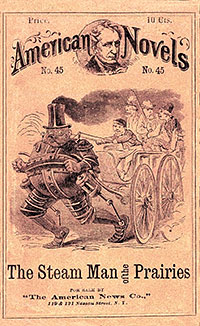 In studying pulps, it’s also valuable to study those fiction sources that preceded the pulps: the story papers and dime novels.
In studying pulps, it’s also valuable to study those fiction sources that preceded the pulps: the story papers and dime novels.
Many of the same types of fiction began in those formats and later migrated to the pulps, especially the various larger-than-life detective and western characters who are the forerunners to the pulp heroes. But a unique set of characters who didn’t are the “Edisonades.”
But what, and who, are these “Edisonades”? The term is modern, coined in the 1990s, and refers to the stories about brilliant young boy inventors and their adventures with those inventions, usually mechanical in nature. These stories were aimed at young boys and were very popular in the late 1800s and into the early 1900s.
When the dime novels and story papers gave way to the pulp magazines, these sorts of characters instead moved to the juvenile-book series. While the Edisonade characters have more or less disappeared from the juvenile-book market, in recent years some of the classic Edisonade characters have been revisited to a degree.
Some of the notable examples of this genre are:
• Johnny Brainerd, who may be the first of the genre, appeared in “The Steam Man of the Prairies” (1868) by Edward Ellis. The Steam Man was basically a robot designed to pull a cart. This story would inspire other characters.
• Frank Reade came next, with a story titled “Frank Reade and His Steam Man of the Plains” (1876). Reade would appear in four stories, then be replaced by his son, Frank Reade Jr. who had a long-running series of stories, over 180 for 20 some years. Reade Jr. built a wide range of vehicles such as airships, both dirigible and helicopter-type (think Robur’s “Clipper of the Clouds”), steam-driven and electric land vehicles, submersibles, and steam-powered robots. Toward the end of the series, Frank Reade III took over. He also had a sister, but I’m not sure how involved in the stories she was.
• Tom Edison Jr. appeared in a dozen stories in 1891 and ’92. He was apparently created as a satire of Frank Reade Jr, tho apparently better written (tho still with issues). There was also an attempt at continuity between the stories, and the tenth story featured what could be considered the first “yellow peril” villain. It is interesting that he is named after Thomas Edison, from whom the genre is named. However, he is not the son of Thomas Alva Edison, but of Tom Edison Sr.
• Jack Wright appeared in 1891 in a long-running series that lasted 121 stories. Interestingly, he was written by the same man who wrote the Frank Reade Jr. series. However, I am lead to understand that the Jack Wright stories were wilder and more imaginative.
• Electric Bob was another character who first appeared in 1893. Apparently only a handful of stories of this 10-year-old inventor came out. His main difference from his predecessors is he usually built vehicles in the form of animals.
Now, sadly, I must point out that these stories were a product of their time, and would be now viewed as “politically incorrect.” Non-whites are usually treated poorly, and in their adventures in foreign lands, those countries not in favor with the U.S. are too often the bad guys. Certainly, someone writing new stories of these characters or creating similar characters could (and should) toss that sort of stuff out and still have a decent story.
As noted, with the demise of the dime novels and story papers, these sorts of characters migrated instead to the juvenile-fiction series. Probably the most well-known of these new characters is Tom Swift. Created in 1910 by Edward Stratemeyer, who created other long-running juvenile series such as the Hardy Boys, Nancy Drew, and the Bobbsy Twins. Tom Swift would last for 40 novels from 1910 to 1940. He would then be replaced by his son, Tom Swift Jr. for a run of 33 novels from 1956 to ’71. While not properly pulp, some pulp writers would wind up writing stories for some of the 1950s and ’60s juvenile series, including William Gibson and Charles Verral.
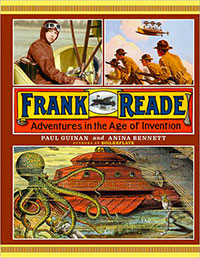 In recent years there have been some re-use of these classic characters. I think the most impressive example is the reuse of the whole Reade family by Paul Guinan and Anina Bennett in their “Frank Reade: Adventures in the Age of Invention” (2012). (I also recommend their earlier original work “Boilerplate” from 2009, which is about a Victorian-era robot). This work looks at the whole family and their inventions as if they were real people, and includes “photographs” of them and their inventions.
In recent years there have been some re-use of these classic characters. I think the most impressive example is the reuse of the whole Reade family by Paul Guinan and Anina Bennett in their “Frank Reade: Adventures in the Age of Invention” (2012). (I also recommend their earlier original work “Boilerplate” from 2009, which is about a Victorian-era robot). This work looks at the whole family and their inventions as if they were real people, and includes “photographs” of them and their inventions.
A trio of Edisonades, Frank Reade Jr., Jack Wright, and Tom Swift (here as Tom Swyfte) appear in the first Nemo volume from Alan Moore and Kevin O’Neill (their follow-on series to their League of Extraordinary Gentlemen). Here hired by Charles Foster Kane on behalf of Ayesha, they pursue Jenna Nemo to Antarctica, to their demise.
And a similar trio of Edisonades, this time Reade Jr., Wright, and Electric Bob (here renamed Robert Trydan) are corrupt industrialists trying to take over the U.S. as the Triumviant in the 1890s. They are opposed by a group of Victorian adventures lead by Nikola Tesla called the Centurions of Science. This is shown in the second “Atomic Robo Presents Real Science Adventures” volume. (More on Atomic Robo soon).
For those wanting more info on these characters, this is a basic start. Jess Nevins‘s site on Fantastic Victoriania has more info. For myself, I think someone wanting to write pulp-style adventures in the late 1800s, these characters could be a great source of inspiration, if you get past the non-PC elements of their stories. If you treated them more like the “Tom Swift Jr.” of their era of just wild inventions and adventures and leave the racism and such out, you could have some interesting stories.

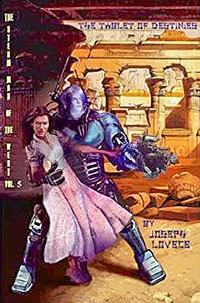
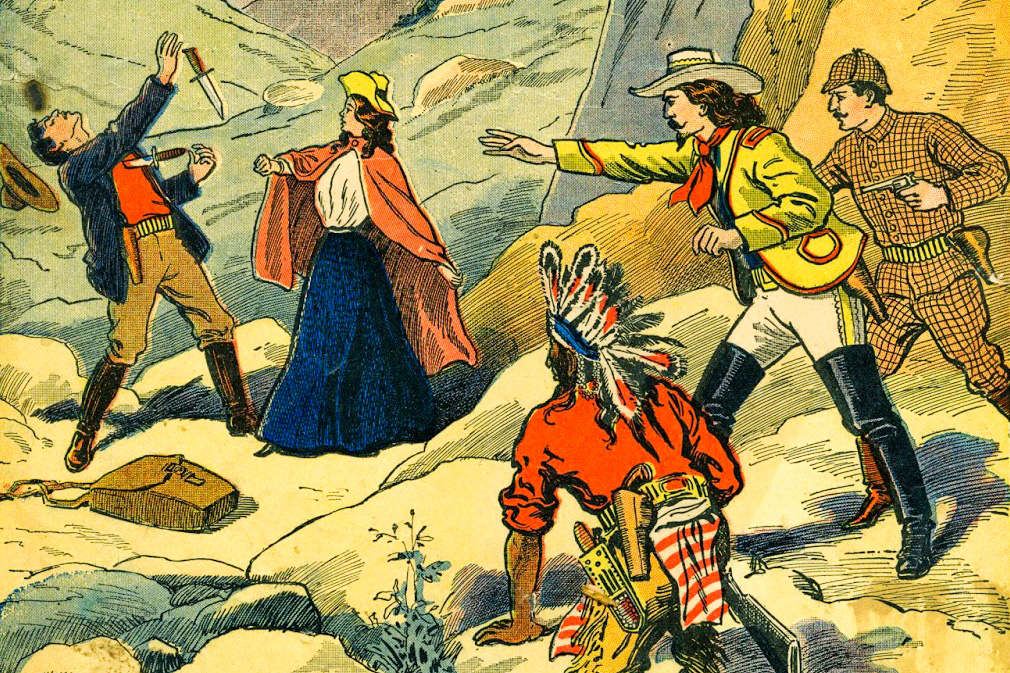
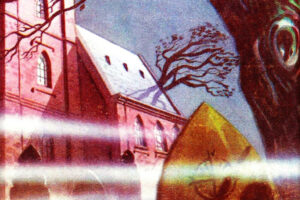

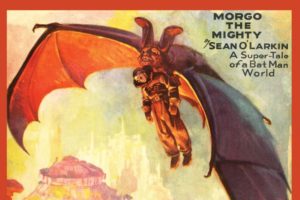
The Tom Swift series was 40 volumes from 1910 to 1941. The first 38 were issued between 1910 and 1935 by Grosset & Dunlap. Two additional stories in Better Little Book format were published by Whitman using the characters from the original series but much shorter stories.
When the Tom Swift Jr. series came out in 1954, P. Schuyler Miller reviewed the initial three volumes in the July 1954 issue of Astounding Science Fiction and discussed the two series overall. He likened them less as science fiction and more as “invention fiction” stories.
Like Jules Verne, the original Tom Swift series pulled ideas from popular science publications of the day. The inventions were bigger, better, and faster—without the engineering compromises required by the real world. Virtually every Tom Swift invention from the first series has a real world counterpart or analog that was built or proposed. Of course, whatever Tom was working on was just what was needed for the latest adventure.
Am well aware of Tom Swift, as I actually read the Tom Swift Jr series as a kid, and have collected that series, as well as the original one and the follow on series. I didn’t get to deep into Tom Swift or the later juvenile series (some of which I also collect) because I felt I was straying from the pulp focus of this blog.
But I thought their ancestors in the dime novels were fair game as forerunners to the pulps.
I’ve heard of the Edisonade sub-genre before. It’s discussed in this Cracked.com article regarding older genres of science-fiction.
http://www.cracked.com/blog/5-wtf-old-timey-sci-fi-genres-that-were-hugely-popular_p2/
I’d argue that, based on the definition given in this article, the comic-book hero Iron Man is probably the most obvious descendant of the Edisonade in popular fiction today.
“The inventor would take his invention (not explicitly a weapon, but certainly bristling with them) into “the frontier,” in the process claiming it or civilizing it or just shooting a bunch of its residents a whole bunch.”
Sounds pretty close to both the original Iron Man comics (which tend to have Iron Man make his debut in either Korea or Vietnam) and the new movies (Afghanistan). Of course, this does expose a lot of the uncomfortably colonialist themes of this particular style of story.
Don’t forget Dick Rodman from Six Weeks in the Moon by Senarens (1896). A reprint of the story will be available soon.
Now available, http://www.amazon.com/Weeks-Moon-Novel-Cover-Volume/dp/1500321710